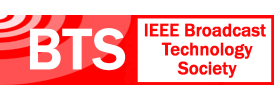- About
- Members
- Sponsors
- Subcommittees
- Technical Documents
- News
- Events
- Spotlight ATSC 3.0
- Contact Us
- Member Login
- Member Meetings
- Advanced Search
Search Site
Member Links
- About
- Members
- Sponsors
- Subcommittees
- Technical Documents
- News
- Events
- Spotlight ATSC 3.0
- Contact Us
- Member Login
- Member Meetings
- Advanced Search
PT-6 Report: ATSC 3.0 and Global ConvergenceApproved: 1 December 2022
Much has been said of the current threats to broadcasting. There is pressure on RF spectrum worldwide and the amount of spectrum allocated to broadcast has been reduced in many countries. As well, data networks capable of delivering video and video-related services are deployed widely. However, broadcasting has many strengths, some of which are unique.
The purpose of this paper is to encourage an exploration of broadcasting strengths and of ways in which those strengths can be harnessed to advance the broadcast industry. In particular, this paper presents the case that the broadcast industry, building on its unique strengths, exploiting its new and advanced technologies, and advancing global convergence can counter threats and advance as an industry globally.
From there, the paper describes ATSC 3.0. This is done to provide a starting point for discussions on convergence. One of the newest technologies in the broadcasting space, it has many features that can provide a basis and opportunity for beneficial convergence.
Subscribe to our Newsletter
Subscribe to The Standard, our monthly newsletter, to stay up-to-date with ATSC news and events around the world.
Site Links
Contact Us
ATSC
1300 I Street NW, Suite 400E
Washington, DC 20005 USA
Do you have questions about ATSC?
About ATSC
ATSC, the Broadcast Standards Association, is an international, non-profit organization developing voluntary standards and recommended practices for digital terrestrial broadcasting. Serving as an essential force in the broadcasting industry, ATSC guides the seamless integration of broadcast and telecom standards to drive the industry forward. Currently, the ATSC 3.0 Standard is providing the best possible solution for expanding the potential of the broadcast spectrum beyond its traditional application to meet changing needs. From conventional television to innovative digital data services, ATSC has one clear goal: to empower the broadcasting ecosystem like never before.
© 2025 ATSC





































